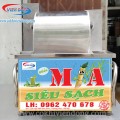So, I was messing around with my Solana tokens the other day—yeah, just chillin’ after work—and something caught me off guard. Staking SOL isn’t just some boring “lock your coins and wait” deal. Nope, it’s kinda like planting a tree that grows faster if you water it right. Seriously, it’s that simple yet kinda complex.
Here’s the thing. The Solana ecosystem is buzzing with activity, especially around staking and swapping tokens. Orca swaps, in particular, have this slick vibe that makes trading feel almost effortless. But I kept wondering: how does staking SOL fit into this picture if you’re using Orca and want something reliable to manage your assets? Hmm…
My gut said, “Look closer,” so I dove deeper, and what I found was kinda surprising. At first, I thought staking was just about earning passive rewards, but actually, it’s way more intertwined with how Solana’s network security and DeFi opportunities work. On one hand, staking helps secure the network, but on the other, it also opens up avenues for liquidity and yield farming—though actually, it depends on which wallet and platform you choose.
Wow! The more I explored, the more I realized that having the right wallet isn’t just a convenience; it’s very very important for maximizing benefits and keeping your tokens safe. And yep, I’m biased here, but the solflare wallet has become my go-to because it blends security with ease, especially when coordinating with Orca swaps.
Okay, so check this out—imagine you’ve got some SOL sitting idle. You could just hold it, right? But staking means you put those tokens to work, supporting validators who keep the Solana blockchain humming. You earn rewards, which are kinda like interest payments, but without a bank involved. Cool, huh?
Staking SOL: More Than Just Passive Income
Initially, I thought staking was only for the big whales who wanted to lock up massive chunks of SOL. Actually, wait—let me rephrase that. Even smaller holders can stake, and sometimes that’s smarter because it diversifies risk. The tricky part? Finding the right validator and wallet combo to avoid pitfalls like slashing or downtime.
What bugs me, though, is how many people overlook the importance of wallet compatibility. Not every wallet plays nice with Solana’s staking features. That’s where the solflare wallet really shines—it’s specifically tailored for SPL tokens and NFTs, making staking and managing assets way less intimidating.
Another thing: Orca swaps aren’t just your average decentralized exchange. They’re designed for speed and low fees, fitting perfectly into the Solana ecosystem’s ethos. When you combine staking SOL with swapping on Orca, you’re essentially creating a mini financial ecosystem that’s agile and rewarding. But, hmm… it’s not without risks.
Something felt off about the whole “easy money” vibe surrounding staking. Rewards are tempting, sure, but validator performance and network health can throw curveballs. If your chosen validator has downtime, your rewards dip, or worse, you lose some SOL due to penalties. So yeah, picking the right validator is very very important.

Oh, and by the way, the user experience matters a lot. I’ve tried different wallets and honestly, few offer the smooth integration that solflare wallet does with Solana and Orca. From staking SOL directly to managing NFTs, it’s like having a Swiss Army knife in your crypto toolkit.
Personal Take: Why I Trust Solflare and Orca Together
I’m not 100% sure if everyone feels this way, but for me, the biggest hurdle was always the fear of messing up transactions or losing access. The interface can be daunting, and some wallets don’t handle staking delegation intuitively. Solflare, however, made it straightforward—delegating SOL to a validator was almost fun.
Here’s a quick story: I once tried staking using a less user-friendly wallet, and I accidentally delegated to a validator with poor uptime. My rewards were minimal, and I almost gave up. Switching to solflare wallet changed the game. Their validator recommendations and clear staking dashboard helped me avoid those mistakes.
On a broader level, staking SOL supports Solana’s ultra-fast network, which is why it’s integral to DeFi apps like Orca. Every swap you make on Orca benefits from the network’s health, partly maintained by stakers. So by staking SOL, you’re not just earning; you’re fueling the whole ecosystem.
Still, I can’t ignore the nagging thought that staking might not be for everyone. The crypto market’s volatility and occasional network hiccups make it less predictable. But if you’re into Solana and want a seamless way to stake and trade, the solflare wallet plus Orca combo is definitely worth a shot.
Wow! The more I think about it, the more I realize that staking SOL is kinda like joining a club where your financial growth depends on both your choices and the network’s health. It’s a partnership, not a solo gig.
Final Thoughts: Where to Go From Here?
So yeah, staking SOL through the solflare wallet while swapping on Orca is one of those crypto experiences that feels both empowering and a bit mysterious. You get rewards, sure, but you also become part of a larger puzzle—supporting validators, liquidity pools, and the entire Solana ecosystem.
If you’re curious and want to dip your toes in, give the solflare wallet a try. It’s friendly for newcomers but robust enough for seasoned users. Plus, its smooth integration with Orca swaps means you can stake, swap, and manage NFTs without juggling multiple apps.
Honestly, I’m still learning myself. But staking SOL feels less like a gamble and more like a strategic move when you have the right tools. And that’s what makes it so darn interesting. Who knew crypto could feel this much like gardening?




Ý kiến bạn đọc (0)